Annepona mariae (Schilder, 1927)
Maria's cowry, 9-18mm
The round yellow to brown spots
on the nearly spherical shell are unique to this species. Although it occasionally
occurs on lagoon pinnacles in caves or rubble, Annepona mariae is most
often seen nocturnally in seaward reef surge channel caves at depths ranging
from about 7 to 22m. Numerous dead shells, some in excellent condition, can
be found during the day on surge channel floors. They are sometimes found more
in groups during the spring months, which may be when they come together to
mate. The species was named by Cypraea expert Franz Schilder for his
wife and frequent collaborator Maria. Specimens have been recorded throughout
most of the Indo-Pacific.
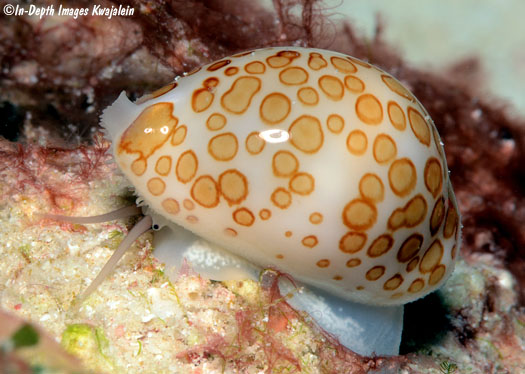
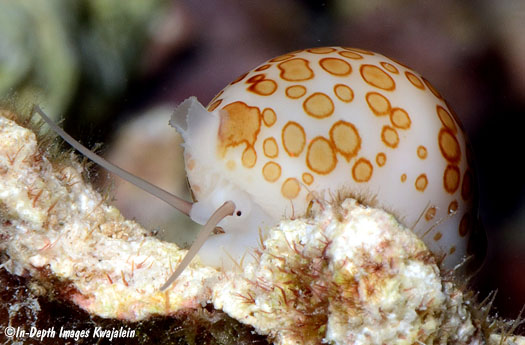
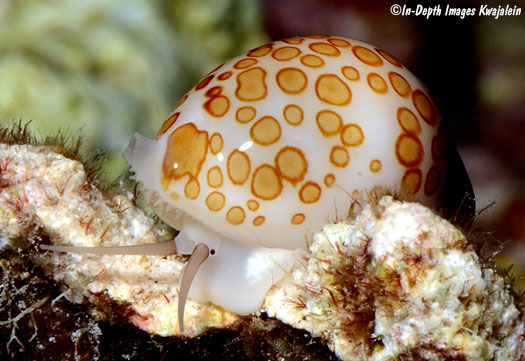
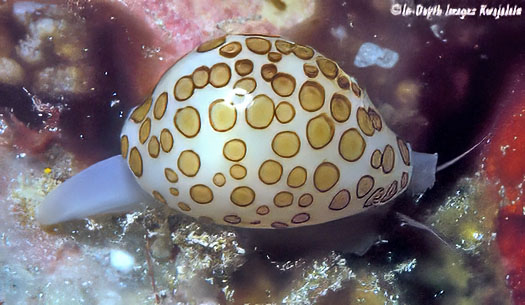
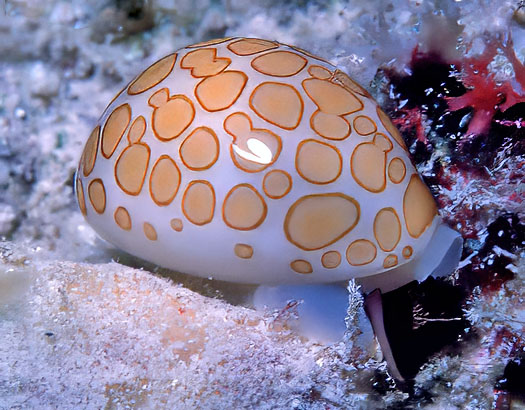
Very shy of lights, the animal
draws its nearly transparent whitish mantle into the shell and refuses to put
it out again, seemingly no matter how long the photographer waits. With enough
patience, you can see the animals come out enough to show the tentacles and
feet as they try to crawl back into the darkness. We're not sure what the clusters
of white spots in the foot are: possibly some sort of defensive glands?
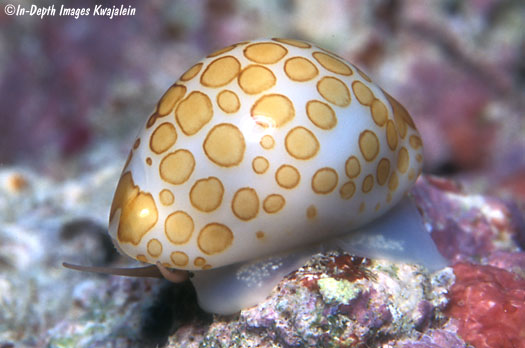
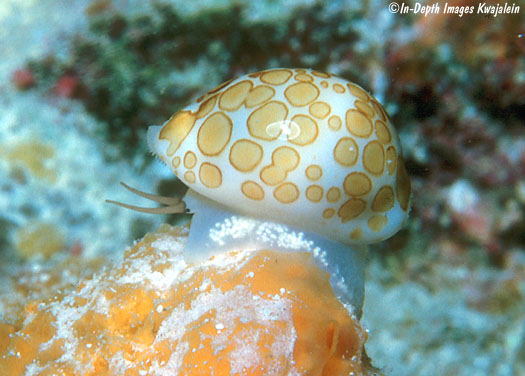
Patterns vary from very clear and
sharp to slightly blurry or even to a doubling of the spots in some specimens.
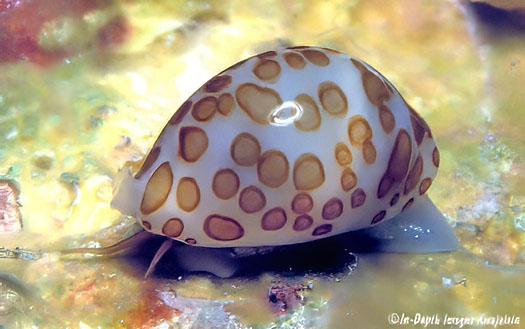
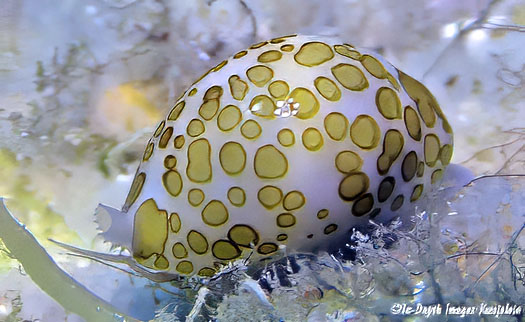
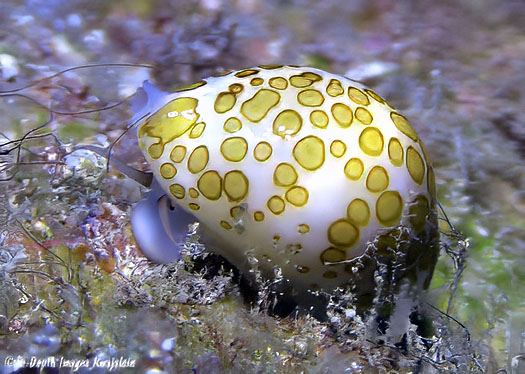
17.2mm shell from 12 March 2016
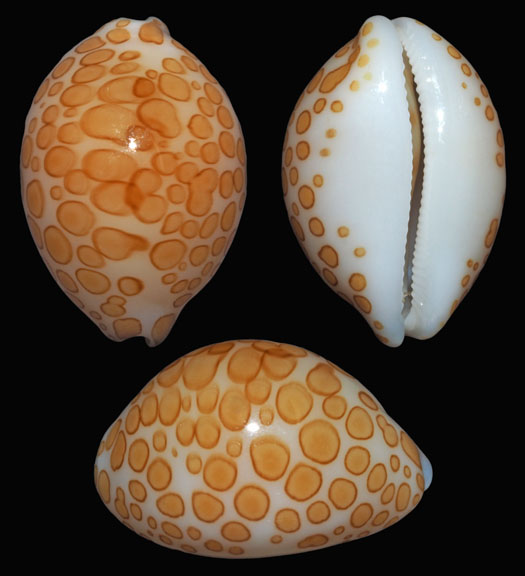
13.75mm shell, 15 May 1982
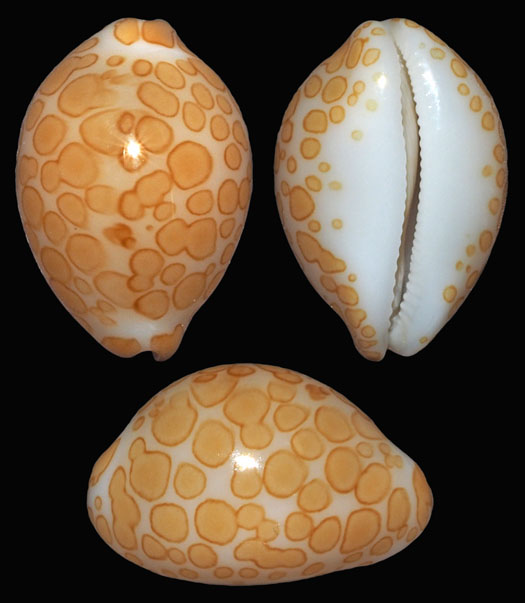
8.75mm shell from 5 June 1994
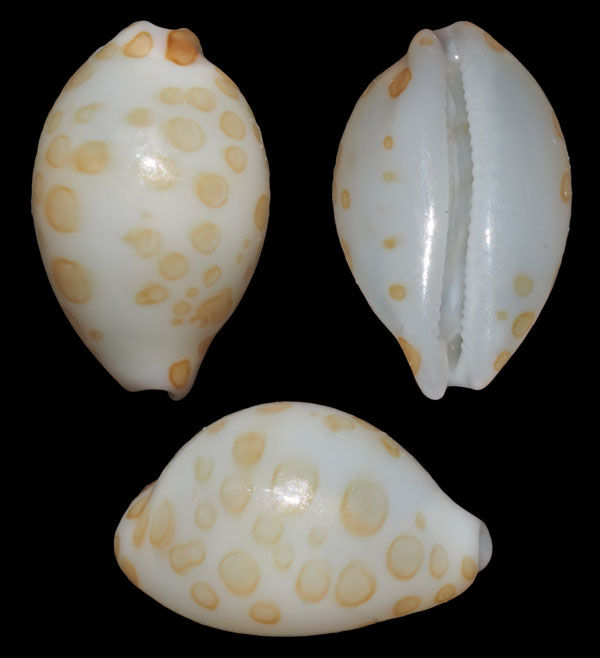
14.15mm shell from 8 October 2016
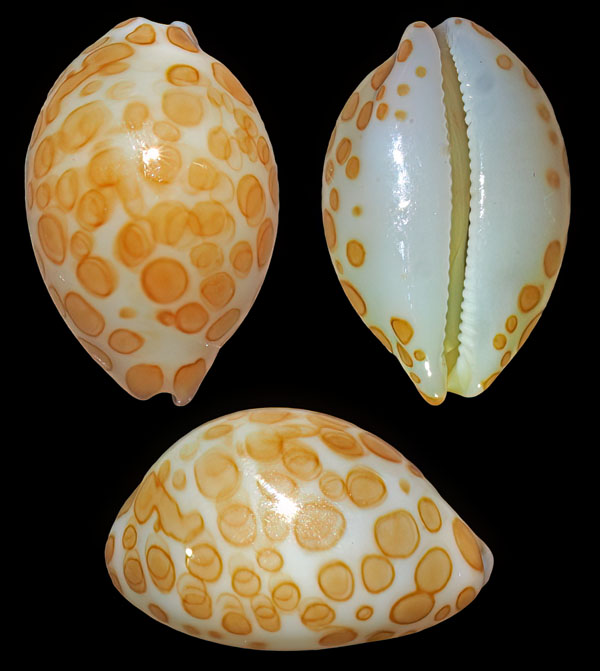
15.8mm shell from 20 July 1990
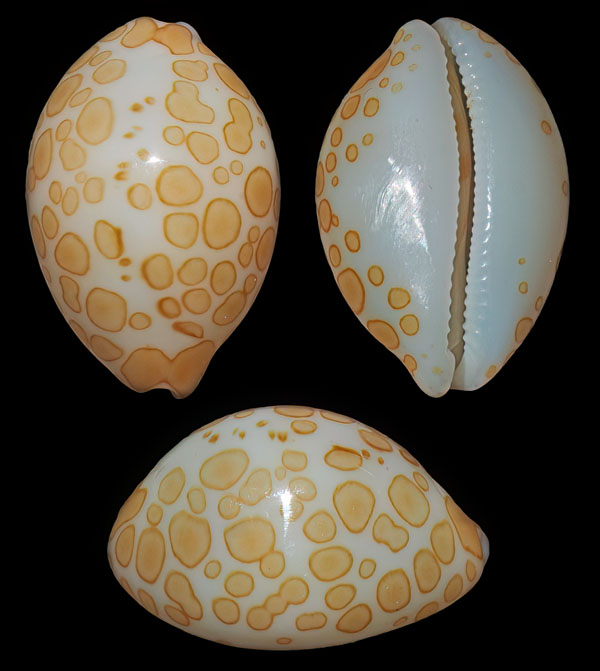
16.3mm shell from 19 October 1990
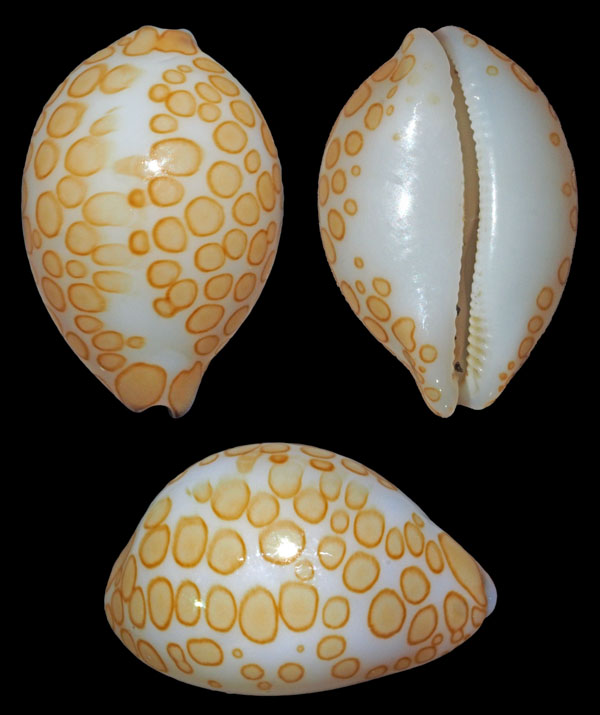
Created 1 April 2008
Updated 1 April 2024
Back to
cowries
Kwajalein Underwater Home
















